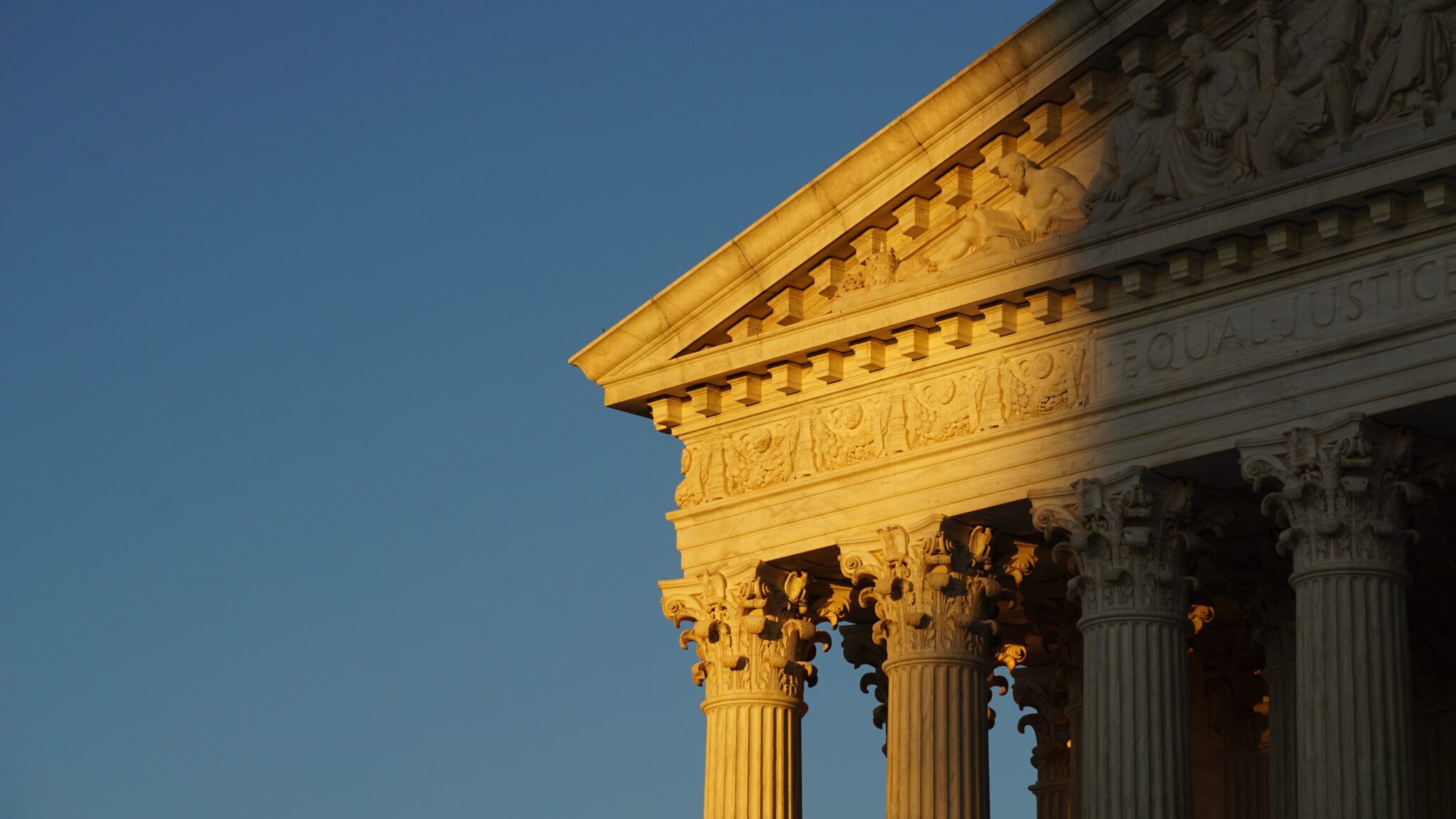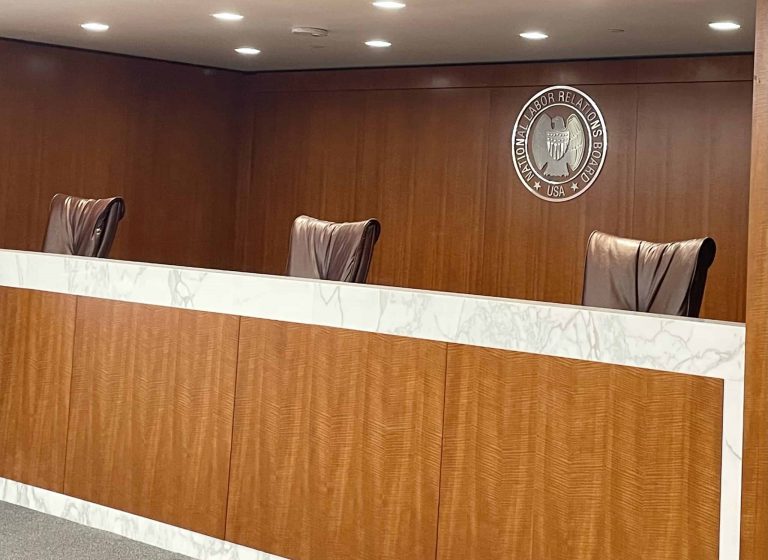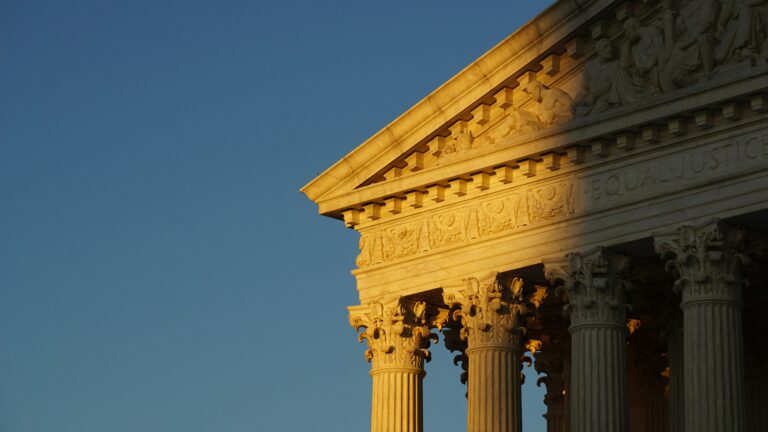
Ted Parker is a student at Harvard Law School and a member of the Labor and Employment Lab.
What would you do if you found out your boss had been taking money from your paycheck, but the amount he was taking was less than the lawyer’s fee to get it back? You would ask your coworkers if the same thing was happening to them, and if it was, you would join forces. With your combined claims, you could now afford the lawyer to get your money back.
This is the logic behind the “collective action” of the Fair Labor Standards Act (FLSA), which gives workers a group mechanism to reclaim their rightful wages (in 2023, nearly half a billion dollars). Now, there is reason to fear that the Supreme Court may break this mechanism through a small procedural tweak, leaving workers in the bind we began with.
Why the Current System Works: Two-Step Certification
This procedural tweak involves the FLSA’s class certification procedure and is the subject of a three-way circuit split. FLSA collective actions, like Rule 23 class actions, begin with a plaintiff suing “individually and on behalf of all others similarly situated.” The next step is to certify the class by showing that this group of similarly situated individuals really exists.
In Rule 23 class actions, this work is frontloaded. Plaintiffs must show that the purported class meets the detailed requirements of Rule 23 (numerosity, commonality, typicality, etc.). Once these rigorous standards are met, an essential benefit kicks in: Everyone who belongs in the class is automatically in the class, unless they affirmatively opt out.
The FLSA collective action is different. Section 216(b) of the statute requires plaintiffs to affirmatively opt in to the class (by writing to the court). This requirement creates a time crunch because the statute also specifies that the two-year statute of limitations (§ 255) continues to run for a plaintiff until they opt in (§ 256). Rule 23 class actions don’t have this time crunch because under American Pipe & Construction Co. v. Utah the statute of limitations is tolled for all plaintiffs by the timely filing of the initial complaint.
Because an American Pipe-style solution is textually forbidden by the FLSA, courts have developed a different solution: two-step certification. Step one is conditional certification, which requires only a modest factual showing. After that, notice is sent out to class members who can then opt in, tolling the statute of limitations. Step two is final certification, which is more like, but not identical to, the rigorous analysis of Rule 23 class actions. This two-step process buys time for plaintiffs to opt in before the statute of limitations runs.
How the Supreme Court Could Break It: One-Step Certification
The two-step certification regime, first announced in Lusardi v. Xerox Corp. in 1983, is now regarded as “traditional.” But in 2021, the Fifth Circuit broke with this tradition. Swales v. KLLM Transport Services announced a new one-step certification process more like the front-loaded analysis of Rule 23. Shortly thereafter, in 2023, the Sixth Circuit announced its own, different certification process in Clark v. A&L Home Care and Training Center, LLC. Employers celebrated both rulings. District courts in the Fourth, Seventh, and Eleventh Circuits have begun migrating over to the new standards, creating district court splits.
These deepening splits tee things up for a Supreme Court intervention. If the Court endorses one of these new procedures, it could spell disaster for the FLSA collective action. Imagine a scenario like the one we began with, where workers must join forces in order to afford a lawyer. One worker initiates the case as the named plaintiff, while the others wait for the class to be certified so they can opt in. Under the Swales standard, they would wait longer, as the court takes time to perform its rigorous analysis. Meanwhile, the statute of limitations could run out, and all those other workers would lose their claims. In fact, it would no longer make financial sense even to continue with the original plaintiff’s claim. Eventually, plaintiffs’ lawyers would bring fewer of these cases, meaning employers could pocket at least small sums with impunity.
Cause for Concern: EMD Sales
At this point, we don’t know how the Court would rule on this issue. But another FLSA case recently before the Court, EMD Sales v. Carrera, provides some clues. EMD Sales was about the standard of proof required for an employer to show that an employee is exempt from FLSA. A unanimous court ruled that the Fourth Circuit’s idiosyncratic standard (clear and convincing evidence) was an unjustified departure from the default one (preponderance of the evidence), a ruling favorable to employers.
In EMD Sales, the Court commented that it would not “choose sides in a policy debate” between employers and employees. While one might think the congressional policy of the FLSA inclines heavily towards the latter, the Court flips this framing: “[T]he public interest in [FLSA] cases does not fall entirely on the side of employees. Most legislation reflects a balance of competing interests.” The Court thus converts some interest on the side of employers into a balanceof interests, which it declines to disturb.
This rhetorical move is ominous for a future certification case. If the Court takes policy arguments off the table, it may be hard to justify the seeming idiosyncrasy of two-step certification, just like the Fourth Circuit’s idiosyncratic standard of proof in EMD Sales. Two-step certification is not exactly in the statute. It was created by judges to effectuate the “broad remedial goal” of the FLSA. Critics thus argue that EMD Sales is a step towards assimilating the FLSA collective action to the Rule 23 class action.
Cause for Hope: EMD Sales
However, there is also cause for hope in EMD Sales—later in the same sentence: “Rather than choose sides in a policy debate, this Court must apply the statute as written and as informed by the longstanding default rule[.]” Textualism and past practice are things that plaintiffs’ lawyers can work with.
The textual demands of the FLSA (the opt-in requirement and the two-year statute of limitations) mean it can never be assimilated to the Rule 23 class action (with its opt-out, American Pipe tolling regime). The Lusardi procedure contours to these textual requirements. By contrast, the Swales procedure ignores the text of the FLSA and pretends it’s dealing with the (unrelated) text of Rule 23. If the Court is truly attuned to the text of the FLSA, it will see that one procedure grows naturally out of the statute, while the other is carelessly grafted onto it.
Past practice also heavily favors “traditional” two-step certification. Invented only in the last few years, the procedures in Swales and Clark are the novel idiosyncrasies here, and they have introduced confusion and uncertainty. Returning to the tried-and-true procedure would be a return to normalcy.
Even on the Supreme Court’s terms, then, plaintiffs can make a convincing case for sticking with two-step certification. In fact, in the coming debate employers may be the ones more reliant on policy arguments (i.e., that their business interests require greater procedural protections). Only time will tell, but EMD Sales may well be cause for hope for the FLSA collective action, not despair.









Daily News & Commentary
Start your day with our roundup of the latest labor developments. See all
December 22
Worker-friendly legislation enacted in New York; UW Professor wins free speech case; Trucking company ordered to pay $23 million to Teamsters.
December 21
Argentine unions march against labor law reform; WNBA players vote to authorize a strike; and the NLRB prepares to clear its backlog.
December 19
Labor law professors file an amici curiae and the NLRB regains quorum.
December 18
New Jersey adopts disparate impact rules; Teamsters oppose railroad merger; court pauses more shutdown layoffs.
December 17
The TSA suspends a labor union representing 47,000 officers for a second time; the Trump administration seeks to recruit over 1,000 artificial intelligence experts to the federal workforce; and the New York Times reports on the tumultuous changes that U.S. labor relations has seen over the past year.
December 16
Second Circuit affirms dismissal of former collegiate athletes’ antitrust suit; UPS will invest $120 million in truck-unloading robots; Sharon Block argues there are reasons for optimism about labor’s future.